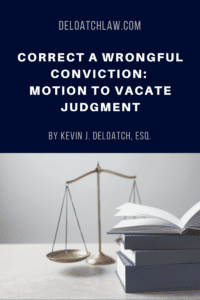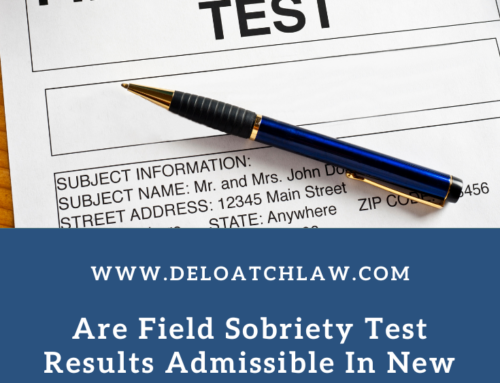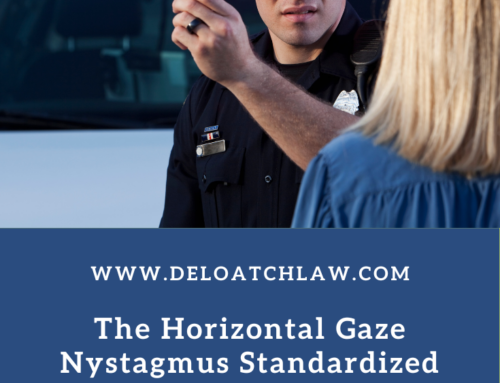 Being convicted of a crime can have far reaching effects in a person’s life. It can impact your career as well as future career choices. It can also impact where you live and the ability to hold or obtain certain licenses. In some instances it can even affect your ability to maintain custody of your children. As a result, being convicted of a crime can lead a person to believe that everything they hoped for in the future – a good life, good job and family – is over. This feeling of hopelessness can be magnified when the conviction came as the result of a bad trial or you being pressured into entering a guilty plea, all while knowing your innocence. However, this doesn’t have to be the case.
Being convicted of a crime can have far reaching effects in a person’s life. It can impact your career as well as future career choices. It can also impact where you live and the ability to hold or obtain certain licenses. In some instances it can even affect your ability to maintain custody of your children. As a result, being convicted of a crime can lead a person to believe that everything they hoped for in the future – a good life, good job and family – is over. This feeling of hopelessness can be magnified when the conviction came as the result of a bad trial or you being pressured into entering a guilty plea, all while knowing your innocence. However, this doesn’t have to be the case.
There are mechanisms that can address the issues resulting in a wrongful conviction to help “right the wrong” that occurred. One such mechanism in New York State is what is commonly referred to as a 440 Motion. The more technical name is a Motion to Vacate Judgement, under New York Criminal Procedure Law Rule 440.10, hence the nickname 440 Motion.
A 440 Motion can reverse a criminal conviction by vacating the judgment. It is important to understand that a 440 Motion is not an appeal. Without getting into too much of the details of an appeal, an appeal is a mechanism used to address technical mistakes or errors that occurred in the trial. Thus, the appeals court will only review the details of the trial record and will not entertain new information or evidence. However, with a 440 Motion the court will entertain new information not contained in the trial, provided the motion is based upon very specific circumstances.
To be clear, the 440 Motion is not a tool to vacate all convictions. Rather, it is used to remedy very specific injustices that call into question the integrity of a conviction. For example, it is used to vacate a judgment when:
- The court did not have jurisdiction over either the subject matter or the accused; or
- The judgment was obtained through duress, misrepresentation or fraud on the part of the court, prosecutor or a person acting on behalf of either the court or prosecutor; or
- Material evidence used at trial resulting in the judgment was known to be false by either the prosecutor or court, prior to the entry of judgment; or
- Material evidence used at trial by the prosecutor was obtained in violation of the defendant’s rights under the constitution of the State of New York or of the United States; or
- During the proceeding resulting in the judgment, the defendant was unable to understand or participate by reason of mental illness; or
- Improper and prejudicial conduct not appearing in the trial record occurred during a trial resulting in the judgment which conduct, if it had appeared in the record, would have required a reversal of the judgment upon an appeal; or
- New evidence was discovered after the entry of a judgment based upon a verdict of guilty after trial, which could not have been produced by the defendant at the trial even with due diligence and which is of such character as to create a probability that had such evidence been in trial, the verdict would have been more favorable to the defendant, provided that a motion based on such ground must be made with due diligence after the discovery of such alleged new evidence; or
- Forensic DNA testing of evidence after the entry of judgment, (1) in the case of someone convicted after a guilty plea, shows a substantial probability that the defendant was innocent, or (2) in the case of a defendant convicted after a trial, the court has determined there is a reasonable probability the verdict would have been more favorable to the defendant; or
- The judgment was obtained in violation of a right of the defendant under the constitution of the State of New York or of the United States; or
- The judgment was for certain prostitution offenses where the defendant’s participation was a result of being a victim of sex trafficking.
Thus, the circumstances in which a 440 motion can be filed are quite specific. Moreover, even when the above circumstances are met, the court must deny a motion when:
- The ground or issue raised in the motion was previously determined on the merits on an appeal;
- The ground or issue at the time of the filing of the motion is appealable or pending an appeal;
- Sufficient facts appear in the trial record to serve as a basis for an appeal but no appeal was filed; or
- The ground or issue relates solely to the validity of the sentence and not the validity of the conviction.
Although the 440 Motion is limited in its basis for filing, it is nonetheless a very powerful tool in correcting an injustice. If the motion is granted the court will vacate the judgment, dismiss the accusatory instrument (i.e. complaint or indictment) and either order a new trial or take such other actions that are appropriate with the circumstances.
A successful outcome of a 440 Motion can be the first step towards your bright future. If you have questions and would like to learn more, contact the Law Office of Kevin J. Deloatch, Esq. at (646) 792-2156. The office has an extensive criminal law practice. Call today for a free consultation.








